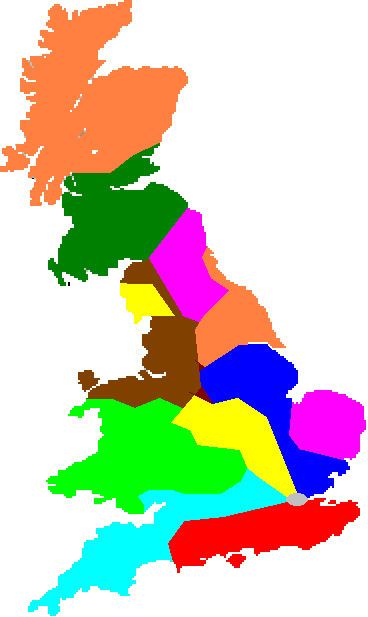 | ||
The National Location Code (NLC) is a four-digit number allocated to every railway station and ticket issuing point in Great Britain for use with the ticketing system on the British railway network. They are used in the issue of tickets and for accounting purposes. They are a subset of the NLCs created by British Rail, which are based on four "main" digits plus two supplementary digits.
Contents
Introduction by British Rail
NLCs were introduced as a method of accounting for and attributing costs and revenue to railway assets. This quotation is taken from the 14th Edition (January 1987) of the National Location Code listing book, published by the British Railways Board:
"With the widespread use of computers within British Railways and the advent of national computer systems for dealing with payroll compilation, stores recording and accounting, wagon control, traffic data, revenue and expenditure accounting, market and traffic surveys etc., the need for a standard location code became increasingly important. In order to meet this need, the Regions were asked in November 1966 to revise and update the publication then known as the Terminals and Mileage Gazetteer Code. At the same time the opportunity was taken to include all sidings, yards, depots, offices, administrative centres, etc., where there is 'railway' activity. [...] A file was developed based on a six-digit code known as the British Railways National Location Code. This was [first] published on 1 January 1968."
Each six-digit code is split into two parts: the first four digits identify the location of the asset or cost centre, and the final two give more information about the specific asset. The "base" location (including all stations and ticket-issuing locations) has 00 after the first four digits; other two-digit combinations signify other types of asset, with the first four digits indicating the "base" location to which they relate. In ticket issuing, only the first four digits are used. Some examples:
Consequence for ticketing systems
In the 1960s and 1970s, there were various ticket issuing systems in use, some quite localised. Some had simple numerical code structures covering a limited number of stations in the relevant area, but there was no universal coding system to identify stations until the NLC was introduced. NLCs began to appear on certain types of ticket (such as the Southern Region mainstay, the NCR21) almost immediately.
With the introduction of the fully computerised INTIS (Intermediate Ticket Issuing System) in the early 1980s, the four-digit version of the NLC became fully established. INTIS tickets were partly pre-printed, and the station name printed on the ticket had the NLC next to it. The machine printed the codes of the "origin" and "destination" stations on the top line of the ticket.
INTIS was superseded by APTIS in 1986; the latter became the universal ticket office system for the next 15–20 years, with the last APTIS machines removed in March 2007. APTIS tickets had the NLC of the station of issue printed on their second line, irrespective of whether the journey started there - so for example, a ticket issued at Brighton (NLC 5268) for a journey from Gatwick Airport to London Victoria had 5268.
An NLC covered the station and all of its associated accounting activities; it was on everything from tickets issued from self-service ticket machines to ticket office staff wage slips. Where stations on the same site needed to be treated as separate entities, they were allocated different codes. When London Waterloo's East (serving South Eastern Division destinations) began in the late 1980s to be considered as a separate station from the main London Waterloo (NLC 5598), its self-service machines got their own code, 5158. Revenue could then be apportioned correctly to the relevant Division, and, after privatisation, the correct Train Operating Company (TOC).
The modern era
After the railway network was privatised in the mid-1990s, there was a need for additional NLCs to be created:
Example of the allocation of new codes
In 1998, Brighton was supplied with two wall-mounted touch-screen machines by Cubic Transportation Systems, Inc., issuing a limited range of tickets by credit card only; code 8882 was given to these. Subsequently, these (and the erstwhile Quickfare machines) were replaced by a six "FASTticket" touch-screen machines manufactured by Shere Ltd.; these bore NLC 8882 as well, whereas the ticket office machines ("SMART Terminal", supplied by Shere) used the station's original code, 5268.
Special NLCs
Any location to which railway revenue or expenditure can be attributed was coded in the 1960s (or later, if it came into existence subsequently): codes are allocated to any location, be it fixed or mobile, that can issue tickets, and to any location that can have a ticket issued to it for a journey from a National Rail station. Some examples are:
Original allocation of NLCs
When British Railways was created in 1948, it was split into six operating regions; these became five in the 1960s (Eastern, London Midland, Western, Southern and Scottish). The distribution of NLCs broadly followed this pattern.
NLCs in the Southern Region
The Southern Region was divided into three divisions: South Eastern, Central and South Western based on the three pre-Grouping companies. NLCs were allocated (approximately) following these boundaries, as follows:
Anomalies
Since privatisation, the need for new codes has grown so much that they have largely stopped being allocated on a geographical basis, especially where additional codes are being given to a station. Where a new station is given a geographically correct code, it is usually because the station had been planned for some time and a gap was left in the appropriate section of codes. An example is Lea Green (NLC 2339), which was proposed for many years (under the name "Marshalls Cross") before being opened in 2000. Sometimes, as at Chandler's Ford, a station is reopened with its original code after being closed. When Coleshill Parkway between Birmingham and Nuneaton was opened in 2007 it was allocated 9882, which relates geographically to Scotland.
Some quirks have always existed, however:
